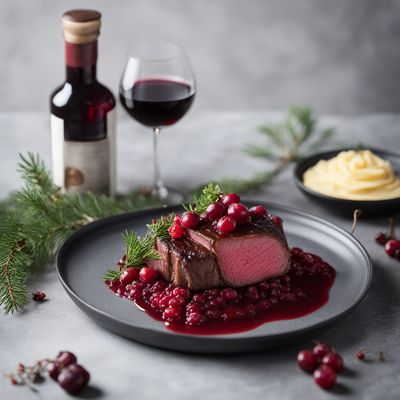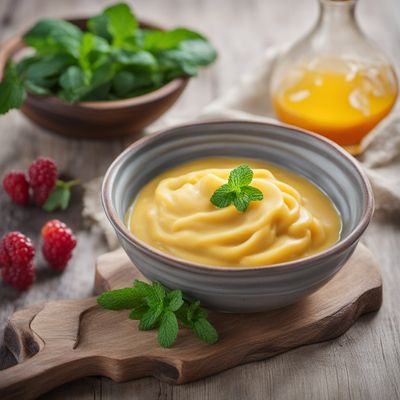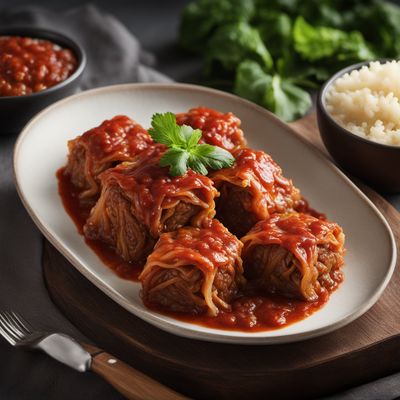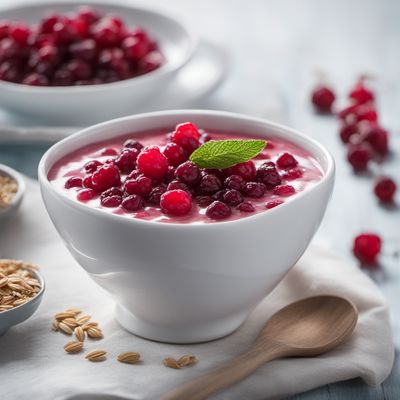
Ingredient
Lingonberries
The Nordic Superfruit: Lingonberries
Lingonberries are small, round berries that are bright red in color. They have a tart and slightly sweet flavor, similar to cranberries, and a firm texture. They are often used to make jams, sauces, and desserts, and are a popular ingredient in Scandinavian cuisine.
Origins and history
Lingonberries are native to the northern regions of Europe, Asia, and North America. They have a long history of culinary and medicinal use, particularly in Scandinavian countries. In Sweden, lingonberry jam is a staple accompaniment to traditional dishes like meatballs and pancakes.
Nutritional information
Lingonberries are low in calories and high in antioxidants, vitamins, and minerals. They are a good source of vitamin C, vitamin E, and dietary fiber.
Allergens
There are no known allergens associated with lingonberries.
How to select
When selecting lingonberries, look for firm, plump berries that are bright red in color. Avoid any that are soft, mushy, or discolored. Fresh lingonberries can be found in some specialty grocery stores or farmers markets, or you can purchase them frozen or in the form of jams or preserves.
Storage recommendations
To store lingonberries, keep them in the refrigerator in a sealed container or bag. They can be stored for up to two weeks. Lingonberry jam or preserves can be stored at room temperature in a cool, dark place.
How to produce
Lingonberries can be grown in cool, northern climates with acidic soil. They require a cold period to set fruit, making them well-suited to regions with long, cold winters. They can be propagated from seeds or cuttings, and they prefer partial shade or full sun.
Preparation tips
Lingonberries can be used to make jams, jellies, sauces, and desserts. They are often served with meat dishes, such as Swedish meatballs or roast venison, to add a tangy flavor. Lingonberry jam can also be spread on toast or used as a topping for pancakes or waffles.
Substitutions
Cranberries can be used as a substitute for lingonberries, although they have a slightly different taste. Lingonberry jam or preserves can be used as a substitute for lingonberries in recipes that call for their tart flavor.
Culinary uses
Lingonberries are commonly used in Scandinavian cuisine. They are often used to make lingonberry jam, lingonberry sauce, or lingonberry desserts. They can also be used in baked goods, salads, or smoothies.
Availability
Lingonberries are commonly available in northern European countries, such as Sweden, Finland, and Norway. They can also be found in some specialty grocery stores or online.
More ingredients from this category
Recipes using Lingonberries » Browse all

Finnish-Style Mansaf
Lingonberry Lamb Stew: A Finnish Twist on Mansaf

Norwegian Reindeer Tenderloin with Lingonberry Sauce
Nordic Delight: Succulent Reindeer Tenderloin with Tangy Lingonberry Sauce

Finnish Meatballs with Lingonberry Sauce
Savory Delights: Finnish Meatballs with a Tangy Lingonberry Twist

Chechen Multekrem
Velvety Chechen Berry Delight

Kiritanpo with a Nordic Twist
Nordic-Inspired Kiritanpo: A Wholesome Fusion of Japanese and Scandinavian Flavors

Sami-style Chickpeas and Pasta
Arctic Delight: Sami-inspired Chickpeas and Pasta

Swedish Stuffed Cabbage Rolls
Savory Delights: Swedish Stuffed Cabbage Rolls

Livonian Kutsinta
Amber Delight: Livonian Kutsinta - A Sweet Taste of Livonian Tradition

Nordic-inspired Donzelle with Lingonberry Sauce
Scandinavian Twist on Italian Donzelle: Lingonberry-infused Delight

New Nordic Bánh Bò
Nordic Delight: A Modern Twist on Vietnamese Bánh Bò

Swedish-inspired Lingonberry Gelato
Nordic Delight: Lingonberry Gelato with a Swedish Twist

Creamy Lingonberry Porridge
Velvety Lingonberry Delight